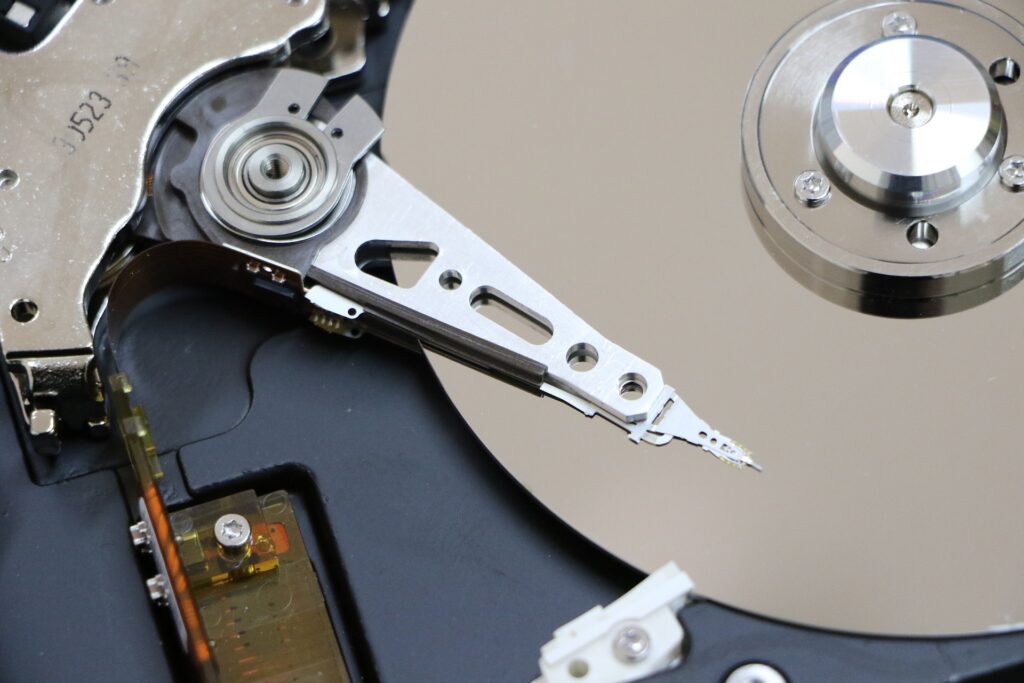
Data Recovery
How to Recover Your Lost Data?
🔍💻 In this guide, you'll learn how to diagnose and recover lost or accidentally deleted information. Follow the steps and check the results after each change.
Data can be recovered from hard drives, USB flash drives, memory cards, and other storage media. This process It can be critical when the information is important to your projects or work.
📌 Before you begin:
- 💾 Back up everything that is still accessible.
- ⚡ Turn off and unplug your computer before handling hardware.
- 🖐️ Discharge static electricity (ESD) by touching a metal surface or wearing an anti-static wrist strap.
- 🛡️ Check the manufacturer's warranty; opening equipment may void it.
Importance of data recovery for businesses and individuals
Files are the foundation of many projects: losing them impacts productivity and decisions. Fortunately, there are methods and good practices to reduce the risk and tools to try to recover them.
- 🔁 Maintain a backup plan (3-2-1: three copies, two media, one offsite).
- 🛡️ Strengthens the security with updated antivirus and safe habits.
- 📝 Document which files are critical and where they are.
✅ In home environments, protect photos, videos, and documents. In businesses, plan restorations to minimize downtime and loss.
Common causes of data loss and how to prevent them
Common causes include failures of hardware, malware, human errors and software problemsPrevention is key:
- 💾 Program backups automatic.
- 🧰 Keep software and systems up to date and avoid suspicious links.
- 🔐 Create strong passwords and enable 2FA; improve habits of the team.
⚠️ Recovery can be complex and doesn't always guarantee results; prevention reduces the impact and frequency of incidents.
Data Recovery Processes: How Does It Work?
Recovery typically involves these stages (🛠️ Test from lowest to highest risk):
- 🔍 Stop use from the affected device to prevent overwrites.
- 💡 Use software scan that analyzes the file system.
- 📦 Clone the disk/partition to another healthy drive before aggressive attempts.
- 📊 Review logs and state of the medium (SMART/sectors).
- 🧩 Attempt to reconstruct structures and selectively recover critical files.
- ✅ Verify the integrity of the recovered data and copy it back to a secure location.
A lot software Integrates deep search, correction, and reconstruction algorithms; remember to work from copies whenever possible.
Data Recovery Tools and Software: Which are the Best?
Count on tools Adequate scanning is essential. Popular options include deep scanning suites and free utilities. Evaluate:
- 🧭 Ease of use and interface.
- 🧪 Deep scan mode and preview.
- 🖴 Support for discs, USB, cards, mobile phones.
- 🧾 Free version license and limitations.
Tip: Try scan-only mode first to verify what can be recovered before writing to the drive. For quick recovery, well-known tools (free and paid) often offer good results; for complex cases, prioritize cloning and forensic analysis.
Recommendations to keep data safe and secure
Keeping data safe is continuous:
- 🧯 Segment and encrypt sensitive information; avoid untrusted services.
- 💾 Implement a plan backups local and cloud.
- 🧰 Keep drivers and systems updated.
- 🧠 Train users against phishing and other bad practices.
📎 Keep a software inventory and a periodic update plan to avoid breaches.
Data Recovery Services: What Are the Options?
If the loss comes from viruses, power failures, hardware or accidental deletion, you can try homebrew software first. If there's physical damage, unusual noises, encryption, or critical information, it's a good idea to consider specialized assistance.
- 🛠️ DIY with software: useful for logical deletion or quick formats.
- 🧪 Specialized laboratories: recommended for physical damage, firmware or RAID, although they can be expensive.
🆘 If the problem persists, or if there are strange noises, a burning smell, visible physical damage, or critical business/legal data, contact a trusted technical service center.
Save your evidence (dates, symptoms, messages) and consult the forum to exchange experiences and safe steps.
Read also How to build a gaming PC, Click here.
DIY Recovery Checklist
Use this table as a quick guide (approximate times and difficulty)
| # | Task | Time | Detail |
|---|---|---|---|
| 1 | Stop use and copy what is accessible | 10–20m | Avoid overwriting; save files that are still visible first. |
| 2 | Scanning with recovery tool | 30–120m | Try a quick scan, then a deep scan; do not write to the affected disk. |
| 3 | Cloning the drive | 60–180m | Clone to another healthy disk before advanced attempts; useful for damaged sectors. |
| 4 | Verification and integrity | 15–60m | Check that open files are not corrupted; try another format. |
Final tips for a safe recovery
💡 Maintain 3-2-1 backups, label drives, document symptoms, and avoid writing to the affected drive. If you detect mechanical noises, physical damage, or critical data, seek out a trusted technical service provider.

